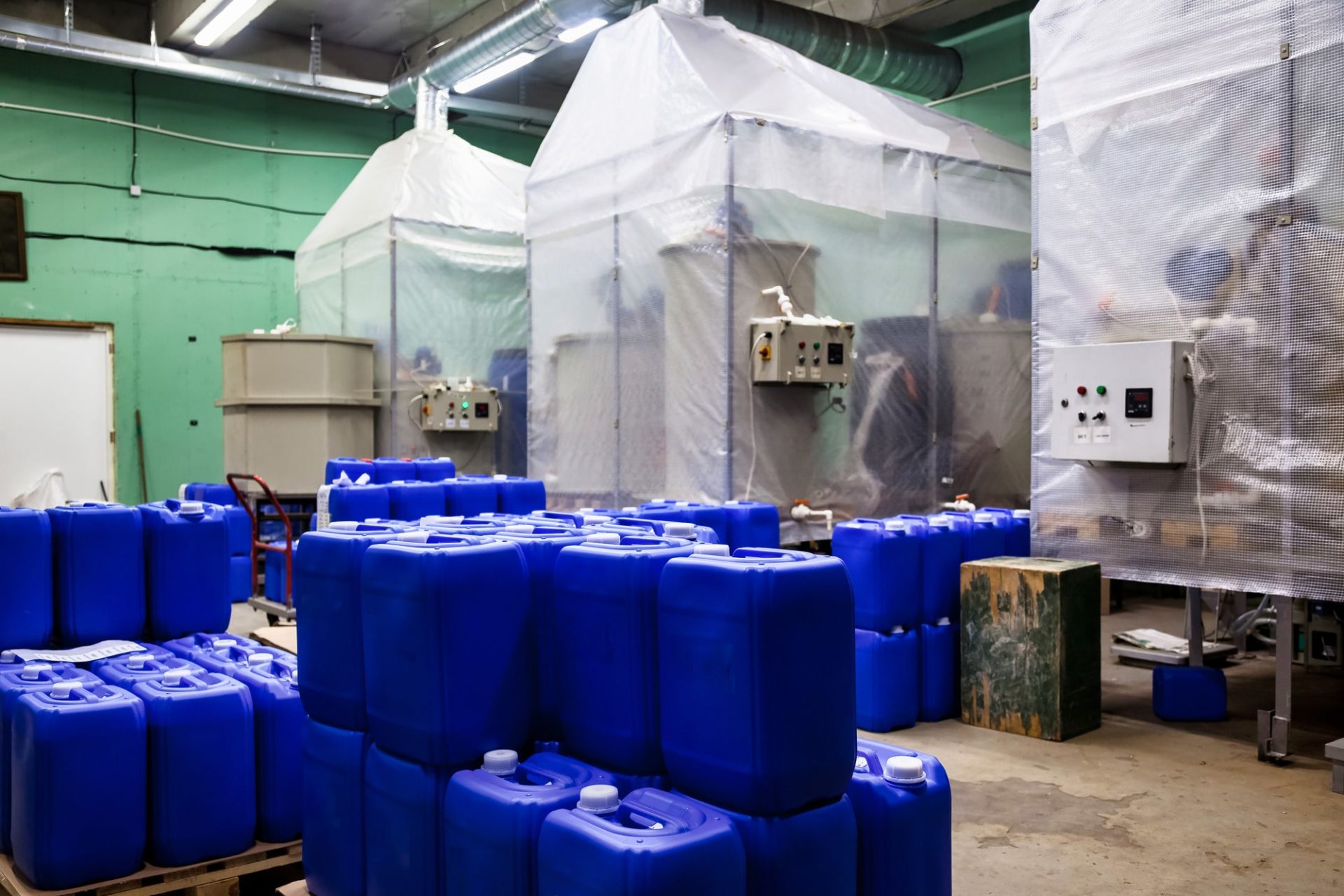

What Is Secondary Spill Containment and Do You Need It?
When dealing with hazardous liquids, you don’t want to take chances. It is imperative to have a robust, reliable solution in place for spill management. Any compromise, whether in the integrity of your intermediate bulk container (IBC) bund or any other spill management system, could lead to workplace damage, or, even worse, serious harm to employees. Accidents happen without warning, and relying solely on your primary containment system may not be enough. This is where secondary spill containment becomes just as important.
What is Secondary Spill Containment?
Secondary spill containment is a protective measure designed to prevent spills from spreading beyond their immediate area when a primary containment system fails. It acts as a failsafe that contains hazardous liquids, oils, or chemicals in the event of a leakage or spill from the primary storage unit, such as tanks, drums or IBCs.
Where primary containment holds the liquid directly, secondary containment is engineered to capture and contain any liquid that escapes, ensuring that it does not seep into the environment or work area. This additional layer of protection plays a critical role in reducing the risk of contamination, damage, or injury in workplaces where hazardous substances are stored or handled.
Who Needs It?
Secondary spill containment is essential for any business that deals with hazardous liquids, chemicals, or pollutants. Whether you operate in manufacturing, agriculture, chemical processing, oil and gas or transport logistics, you are particularly at risk from spillages. If your operation involves substances that could potentially harm the environment, endanger your workforce or violate safety regulations, secondary containment is not optional – it is a regulatory requirement. Failure to install adequate containment solutions could lead to severe financial penalties, environmental damage and reputational harm.
Why Is Secondary Spill Containment Important?
The importance of secondary spill containment is just as significant as primary spill containment. Aside from being a requirement under several regulatory frameworks, it provides a safety net, ensuring that any accidental spillage does not spread uncontrolled.
Without secondary containment, a breach in the primary storage system could result in hazardous materials contaminating the workplace, equipment, or nearby environments, potentially leading to expensive clean-up operations and damage to company assets. More importantly, it protects the health and safety of workers by preventing exposure to dangerous chemicals or substances.
For more information, read our guide to the importance of secondary spill containment.
What’s the Difference Between Primary and Secondary Containment?
Primary containment involves the direct storage of hazardous liquids in containers such as drums, tanks, or IBCs. These systems are designed to hold and secure the substance. However, they are not infallible – faults or leaks can occur due to wear and tear, poor maintenance, or accidental damage.
Secondary containment, on the other hand, serves as a backup system. It is designed to capture any spills or leaks that might escape the primary containment. This can take various forms, such as bunded spill pallets and spill trays. In simple terms, while primary containment stores the liquid, secondary containment ensures that, should a leak occur, the spill is contained and does not cause harm. Both are as vital to effective containment as each other.
Products That Deliver Secondary Spill Containment
At Spill Shop, we stock a wide range of products that ensure effective secondary spill containment. For businesses that require quality spill management solutions, here are some of our options:
- Single IBC Bunds are designed to contain spills for a single IBC, able to deliver up to 1100L of liquid while providing excellent secondary containment thanks to its robust Polyethylene construction.
- Double IBC Bunds can be used when you have two IBC bunds of the same or compatible liquid to contain. Not only does it protect against potential IBC failures, but allows forklifts to transport the bunds simultaneously, cutting decanting and transport time in half.
- Chemical bunds are designed to handle potentially hazardous or toxic chemicals. Caution is advised when dealing with corrosive or flammable substances, as these bunds are not always suited for such chemicals.
- Drip trays are more suited to smaller leaks and spillages. They are small shallow plastic or rubberised containers that catch drips of liquid when placed underneath single drums, machinery or drip risk areas, preventing spills from reaching the work floor space where they could spread and increase the risk of accidents.
Choose SpillShop for Quality Spillage Control
For businesses in need of dependable spill control solutions, SpillShop offers an extensive range of products designed to ensure workplace safety and compliance. Whether you require primary spillage containment or secondary spill containment such as IBC bunds, our products ensure that your workplace is equipped to handle any incident effectively and in full compliance with health and safety regulations. Contact SpillShop today to learn more about our spill control solutions and how we can assist in preparing your workplace for any potential spillages.
